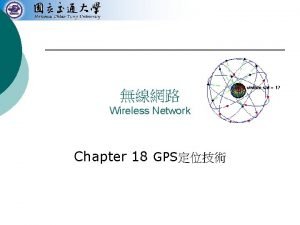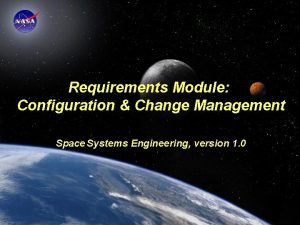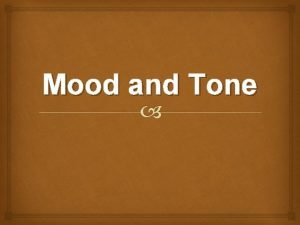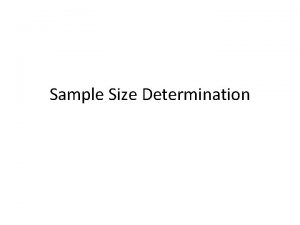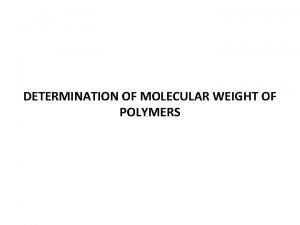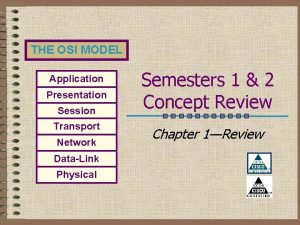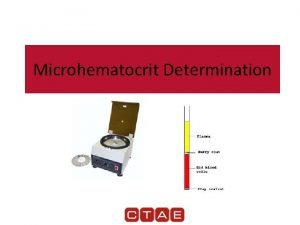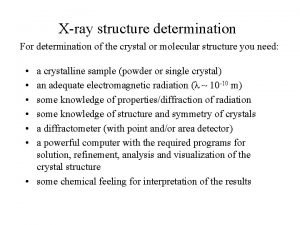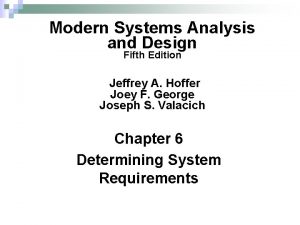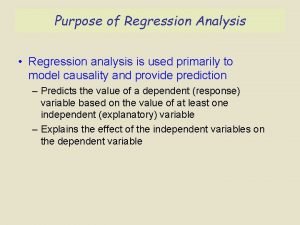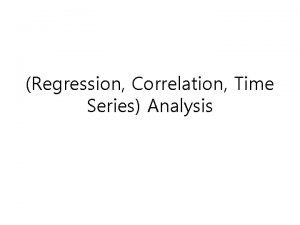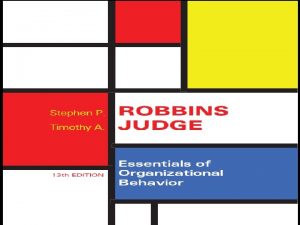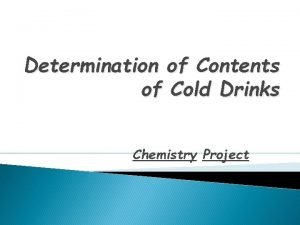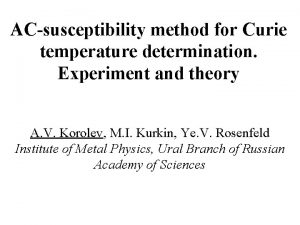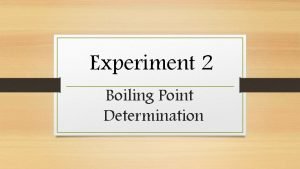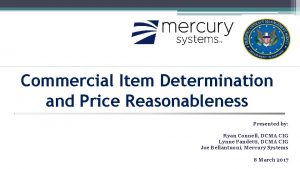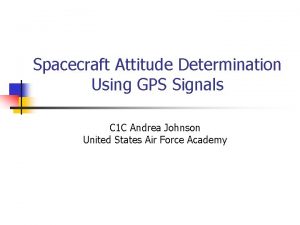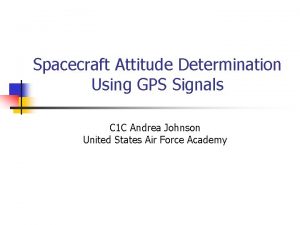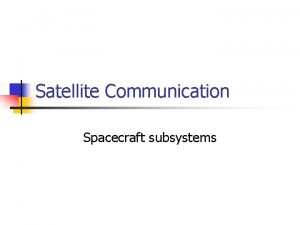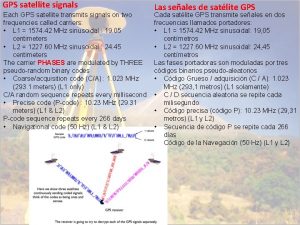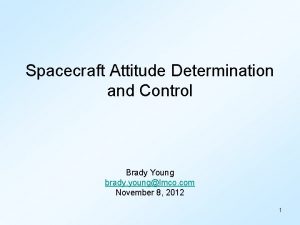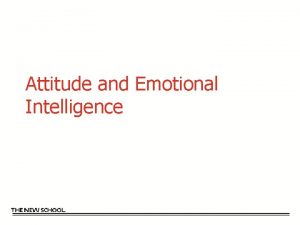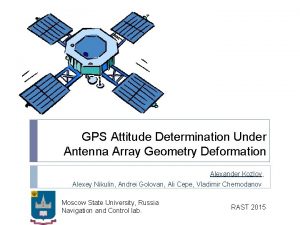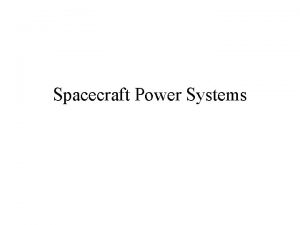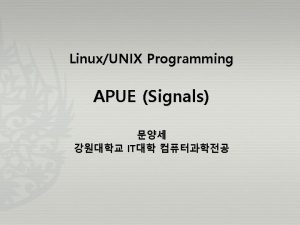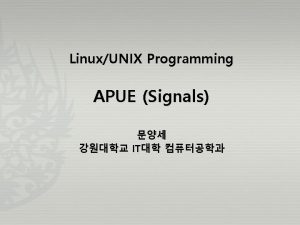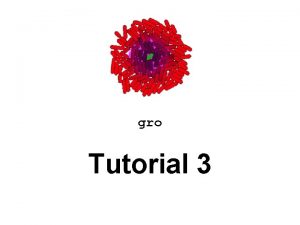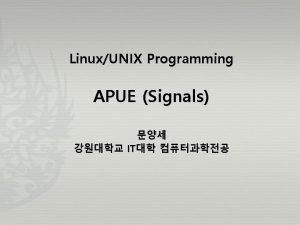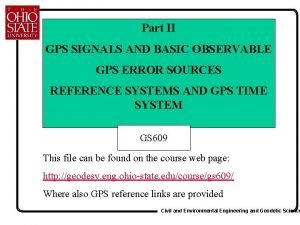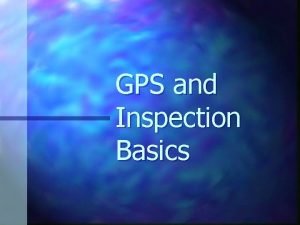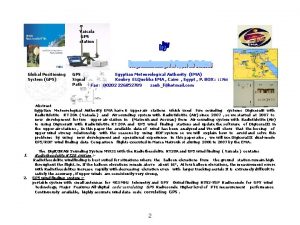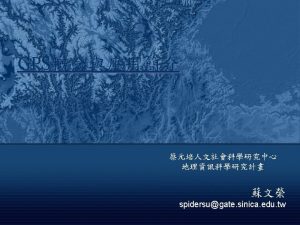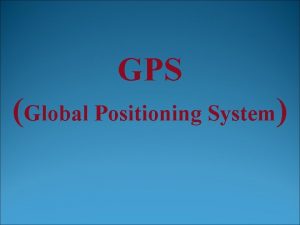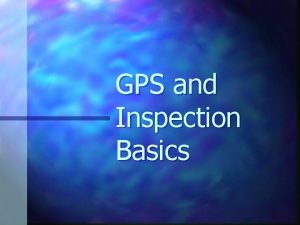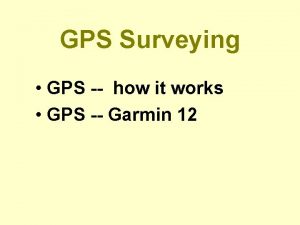Spacecraft Attitude Determination Using GPS Signals C 1



























- Slides: 27

Spacecraft Attitude Determination Using GPS Signals C 1 C Andrea Johnson United States Air Force Academy

Outline n n n n n Concept review/ Prior work Goals Receiver arrangement Integer resolution Assumptions/ Coordinate Frames Minimizing the loss function Results Conclusions Recommendations

Concept Review n n Two receivers detect the same GPS satellite signal Phase differences can be used to determine the angle of the line defined by the 2 receivers

Concept Review Cont. n n Determine matrix, A, that transforms baseline vector from body frame to LO Issues n n Find n Accurate loss function minimization

Prior Work n Minimizing the loss function n n Linear least squares ALLEGRO (Attitude-Lean-Loping-Estimator using GPS Recursive Operations)

Prior Work Cont. n n Linear least squares with motion-based integer resolution: Non-linear, predictive filter assuming n has already been resolved:

Project Goals n n n Integer resolution algorithm Non-IC dependent minimization technique incorporating integer phase difference measurements Design computer code to perform attitude determination

Receiver Arrangement 12. 50. 5λ n n 2 master antennas, 12. 50. 5λ 2 slaves, 4 intermediate Non-military frequency: 1575. 42 MHz, λ = 0. 1903 m 5λ Master antenna Slave antenna Intermediate antenna

Integer Resolution n Intermediate receivers n n Variation of integer search Unique solution to 2 phase difference measurements if baselines not multiples of each other Third provides check Accurate even for large baselines 2λ 3λ Φ 1 Φ 2 Φ 3

Assumptions/ Coordinate Frames n n n Algorithm uses single set of 3 receivers Same 2 GPS satellites always in view No masking or multipathing “Inertial” reference frame: local orbital Body frame = LO when roll, pitch, and yaw = 0 zlo xlo ylo

Assumptions/ Coordinate Frames Cont.

Minimizing the Loss Function n Linear n n n ALLEGRO n n n Diverges for poor initial guesses Motion-based integer resolution Does not account for n in algorithm Separate motion-based integer resolution Gauss-Newton n Not sensitive to initial conditions Always converges Designed for minimization of squared functions

Minimizing the Loss Function Cont. n Generating Test Data n 3 orbit propagators n n n 1 for spacecraft, 2 for GPS satellites 2 -body EOM, no perturbations Ode 5/Dormand-Prince numerical integration Fixed time-step: 1 sec 1 hour simulation

Minimizing the Loss Function, Cont. n 1 attitude propagator n n n Euler moment, no disturbance torques Initialization program generates actual fractional phase differences and quaternions Noise added with

Minimizing the Loss Function, Cont. n n Gauss-Newton/ Gauss-Newton-Levenberg-Marquardt Receiver locations written in body frame coordinates, units of wavelengths

Minimizing the Loss Function, Cont. n Unknown value is the A-matrix, must be converted to a vector for GN/GNLM

Minimizing the Loss Function, Cont. n n Minimization equation requires solving for state using Gaussian elimination or decomposition This is GN method

Minimizing the Loss Function, Cont. n n n Sometimes a singularity occurs: To counter this, an additional term is needed: If the singularity still occurs, multiply λ by 10 and recalculate

Minimizing the Loss Function, Cont. n Defining variables:

Minimizing the Loss Function, Cont. n Jacobian matrix:

Minimizing the Loss Function, Cont. n Determining attitude from the transformation matrix:

Minimizing the Loss Function Cont. Orbit Propagators (3) GPS 1, GPS 2, & S/C IJK vectors Attitude Propagator S/C actual quaternion Initialization Program 3 noisy Phase measurements Transformation matrix/ quaternions GN/ GNLM Program Integer 3 integer Resolution phase differences Program

Results Initial Guess # Iterations Method % Error Identity matrix 100 GNLM 94. 34 Identity matrix 100 GN 217. 88 Actual 100 GNLM 468. 47 Actual 100 GN 26. 15 Actual 10 GN 243. 82

Conclusions n Significant errors caused by several factors n n n GN/GNLM intended for vectors of parameters, not vectorized matrix Use of constant to prevent singularities Linear receiver arrangement Only 2 sightlines used (minimum of 4 available) GN/GNLM sensitive to measurement errors

Conclusions, Cont. n n ALLEGRO remains most accurate GN/GNLM with modifications may or may not perform better

Recommendations n n Use matrix for singularity avoidance Determine better method for comparing results of matrix calculations (compare entire matrix, elements thereof, or a combination of both) Integrate integer resolution algorithm into GN/GNLM algorithm If cannot use GN/GNLM, incorporate integer resolution algorithm into ALLEGRO algorithm

Questions?
 Gps gps gps
Gps gps gps Modulo positioning
Modulo positioning Spacecraft requirements management
Spacecraft requirements management Language
Language Communicative signals and informative signals
Communicative signals and informative signals Communicative signals and informative signals
Communicative signals and informative signals Assay of aspirin using back titration
Assay of aspirin using back titration Tone in literature
Tone in literature Computing sample size
Computing sample size Polymer molecular weight determination methods
Polymer molecular weight determination methods Number of bits borrowed
Number of bits borrowed Microhematocrit determination
Microhematocrit determination X-ray structure determination
X-ray structure determination Contemporary methods for determining system requirements
Contemporary methods for determining system requirements Transport number in electrochemistry
Transport number in electrochemistry Purpose of regression
Purpose of regression Correlation stufy
Correlation stufy North carolina residency determination service
North carolina residency determination service Ash content determination
Ash content determination Exchange rate determination and forecasting
Exchange rate determination and forecasting Uniform determination of death act (udda)
Uniform determination of death act (udda) Self-determination theory
Self-determination theory Personal services business determination
Personal services business determination Acknowledgement for chemistry
Acknowledgement for chemistry Curie point experiment
Curie point experiment Boiling point determination experiment
Boiling point determination experiment Commercial item determination example
Commercial item determination example Sex determination brainpop quiz answers
Sex determination brainpop quiz answers
